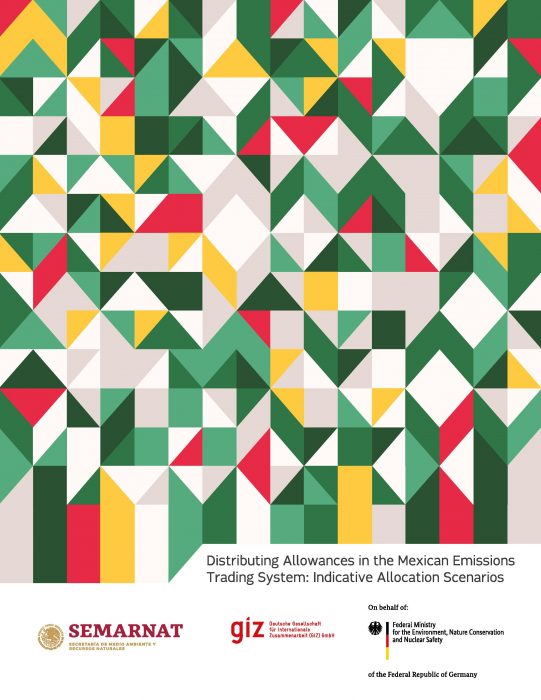The project “Preparation of an Emissions Trading System in Mexico” (SiCEM) publishes a novel and Mexico-specific study on allowance allocation scenarios in an ETS, as part of an effort to provide solid technical recommendations to support a robust and cost-effective ETS in Mexico.
In light of the upcoming pilot phase of the Mexican ETS, which is set to begin in 2020, the GIZ project “Preparation of an Emissions Trading System in Mexico” (SiCEM) has been conducting a series of activities which include the development of technical studies to inform decision-making with regards to design of the Mexican ETS.
Once the ETS cap is defined, a fundamental stage of the ETS design is distributing emissions allowances within the cap among the individual installations. What is the most appropriate way to do so? To answer this question, a detailed study on the different permit allocation alternatives for the Mexican ETS was developed, including indicative allocation scenarios that put those alternatives into practice.
The scenarios were developed using a flexible allocation tool which allows calculating the allowances to be allocated to each installation based on historical emissions, as well as using energy-based benchmarks. The tool includes built-in data from the Mexican Emissions Registry (RENE) and a few design parameters. Although production data is currently unavailable, the tool is versatile enough to incorporate such data in the future, if the need to calculate production-based benchmarks arose.
There are various allowance allocation logics: allocation may be done through government-organized auctions, or allowances may be distributed among participants for free. If emission permits are allocated freely, this may be done based on historical emissions (also called grandparenting) or based on benchmarks to reward the best-performing installations. These approaches differ in the level of complexity in their implementation, on the government revenue raised, as well as on their level of protection from carbon leakage, their reward for early action, and, most importantly, on the efficiency of carbon price discovery.

Although governments usually start by using the grandparenting approach to provide transitional support for carbon-intensive industries, it is recommended to migrate gradually towards a production-based benchmark approach – which will require unprecedented data reporting efforts for the Mexican industries. In the longer term, the recommendation is to increase the share of auctioned allowances. Competitiveness analyses may be used as inputs to determine the sectors deemed at lower risk of carbon leakage.
The upcoming pilot phase provides with an opportunity to test the Mexican ETS allocation approaches explored in the present study. Additional studies covering a variety of technical issues be published in the “IKI-Alliance Mexico” blog in the coming months.
For more information, please contact us at: Comercio.Emisiones-MX[AT]giz.de
Click on the image below to download the publication:

